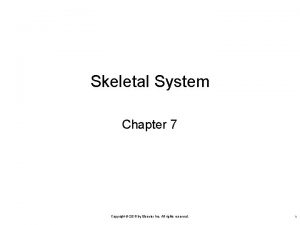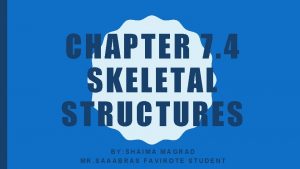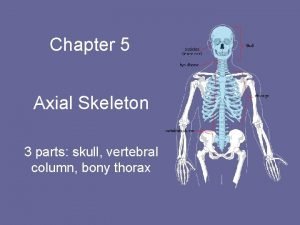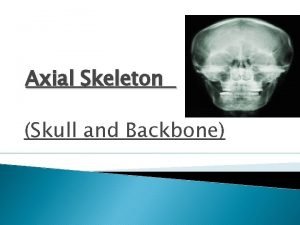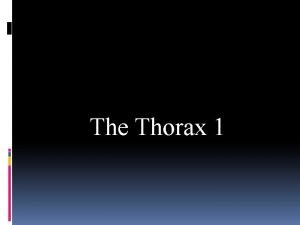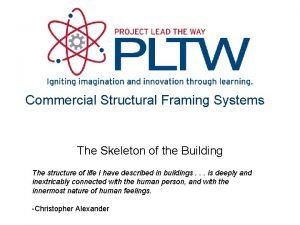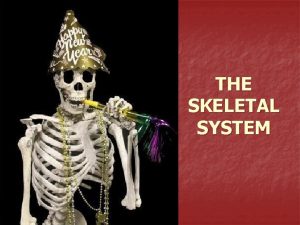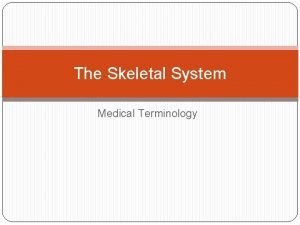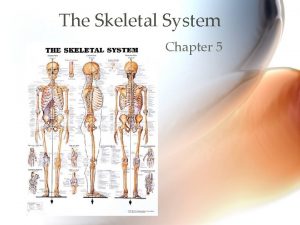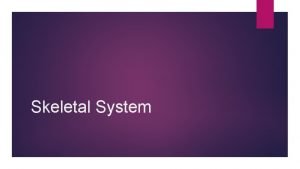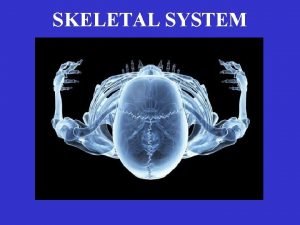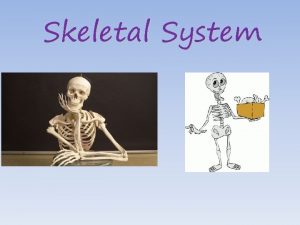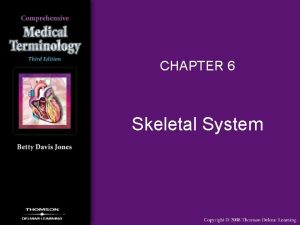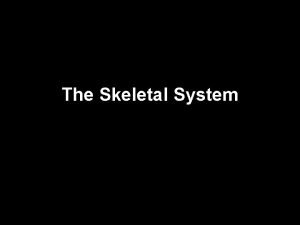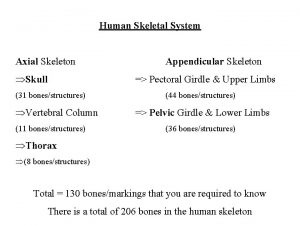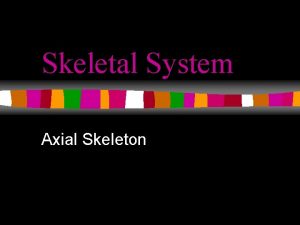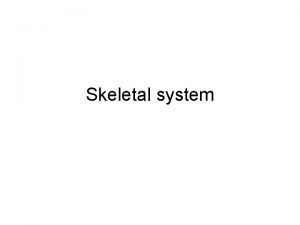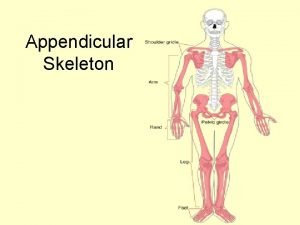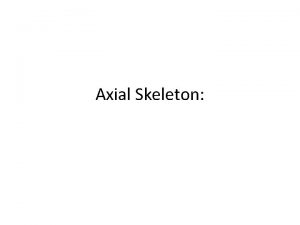The Skeletal System The Skeleton is the name












- Slides: 12

The Skeletal System • The Skeleton is the name given to the collection of bones that holds the rest of our body up. • Greek: The word Skeleton means a “dried body”. • Our skeleton is very important to us. It has five major functions.

There are 5 functions jobs 1. protects our internal organs such as the brain, the heart and the lungs. 2. gives us the shape and support that we need. Without our skeleton, we would just be a blob on the floor. 3. allows us to move. Because our muscles are attached to our bones, when our muscles move, they move the bones, and we move 4. produces blood cells 5. stores certain materials until your body needs them.

2. When you were born, your skeleton had around 300 bones. By the time you become an adult, you will only have around 206 bones. This is because, as you grow, some of the bones join together to form one bone. Bones contain two minerals, Calcium and Phosphorus

3. How Many Bones? • Skull and upper jaw 21 bones • 3 tiny bones in each ear • Lower jaw (mandible) • Front neck bone (hyoid) • Backbone or spine (26 separate bones or vertebrae) • Ribs (12 pairs - same number for men and women) • Breastbone or sternum • Each upper limb has 32 bones: 2 in shoulder, 3 in arm, 8 in wrist, 19 in hand fingers. • Each lower limb has 31 bones: 1 in hip (one side of pelvis), 4 in leg, 7 in ankle, 19 in foot and toes. • Total = 206 bones

4. Inside a Bone Old bones are dead, dry and brittle. But in the body, bones are very much alive. They have their own nerves and blood vessels, and they do various jobs, such as storing body minerals. 5. A typical bone has: 1. ) an outer layer of hard or compact bone, which is very strong, dense and tough. 2. ) Inside this is a layer of spongy bone, which is like honeycomb, lighter and slightly flexible. 3. )In the middle of some bones is jelly-like bone marrow, where new cells are constantly being produced for the blood.

Joints of the skeleton • Our bones don't simply work on their own. The bones join together to form joints. • Joint- A place where two bones come together

Two Kinds of Joints • The two kinds of joints in the body are… • Immovable Joints: These include the bones of the skull and ribs attached to the sternum • Movable Joints: These are the majority of your joints.

• Types of movable joints 1. ) Ball and Socket example: shoulder, hips 2. ) Pivot joint example: neck 3. ) Hinge joint example: knee, elbow 4. ) Gliding joint example: ankles, wrist

• The end of each bone is covered by a tough, smooth shiny substance called cartilage. The cartilage-coated bone-ends are kept apart by a thin film of slippery fluid that works like oil in a car. All of this is so your bones won't scratch and bump against each other when you move. • Cartilage- A connective tissue that is more flexible than bone and that gives support to some parts of the body

• Our bones are held together by strong stretchy bands called ligaments. • Ligament- Strong connective tissue that hold together the bones in a moveable joint.

• The largest bone is the pelvis, or hip bone. In fact it is made of six bones joined firmly together. • The longest bone is the 'femur', in the thigh. It makes up almost one quarter of the body's total height. • The smallest bone is the 'stirrup', deep in the ear. It is hardly larger than a grain of rice. • The ears and nose do not have bones inside them. Their inner supports are cartilage or 'gristle', which is lighter and more flexible than bone. This is why the nose and ears can be bent. • After death, cartilage rots faster than bone. This is why the skulls of skeletons have no nose or ears.

 Chapter 7 skeletal system
Chapter 7 skeletal system Chapter 7:4 skeletal system
Chapter 7:4 skeletal system Chapter 5 skeletal system figure 5-13
Chapter 5 skeletal system figure 5-13 Receive
Receive Axial vs. appendicular skeleton
Axial vs. appendicular skeleton Axial skeleton vs appendicular
Axial skeleton vs appendicular Lumbocostal triangle
Lumbocostal triangle Name three line segments
Name three line segments Name of muscle
Name of muscle Skeleton steel framing system
Skeleton steel framing system What are the five functions of the skeletal system
What are the five functions of the skeletal system Medical terminology skeletal system
Medical terminology skeletal system Skeletal system
Skeletal system
